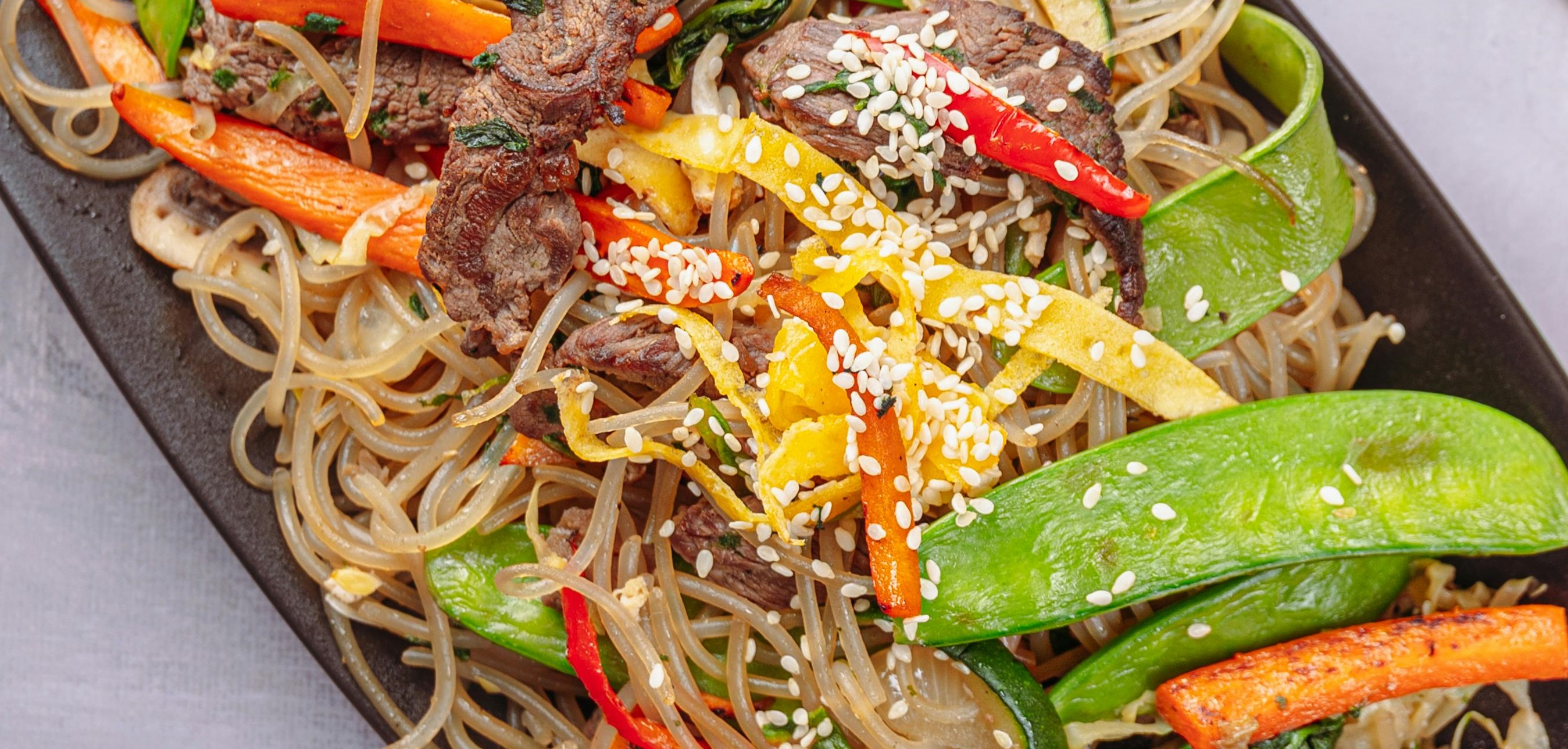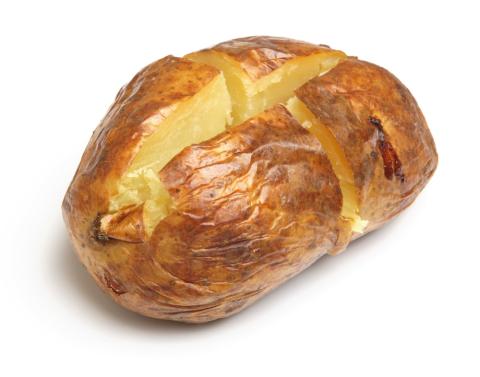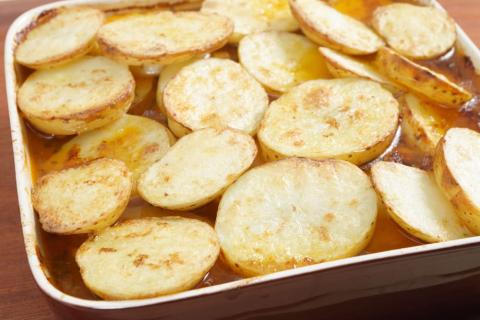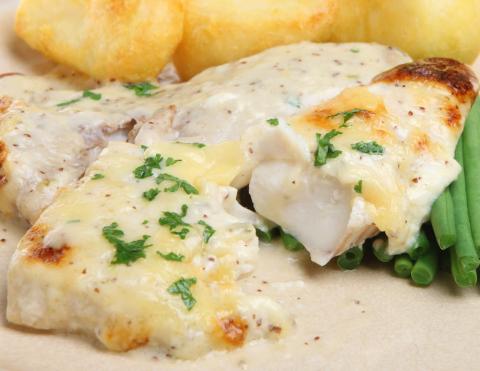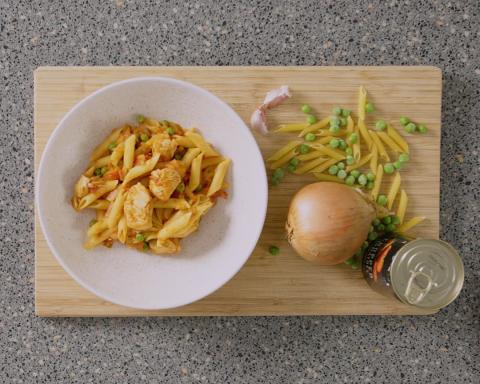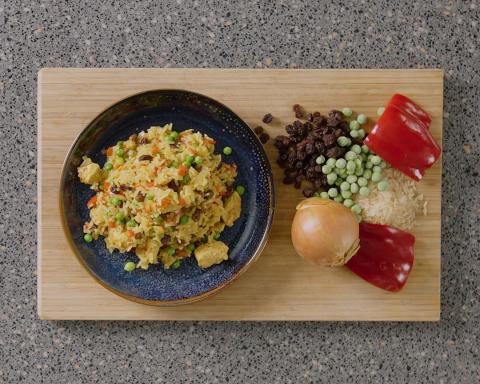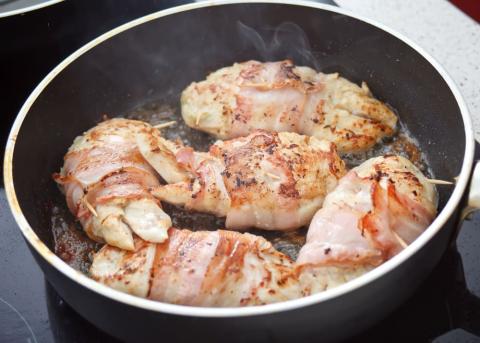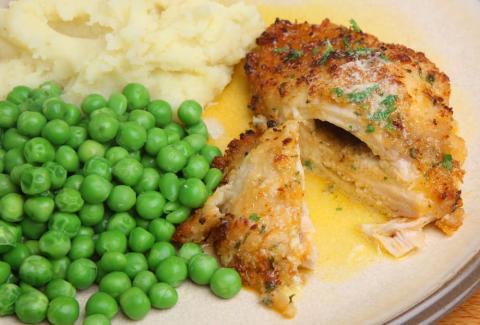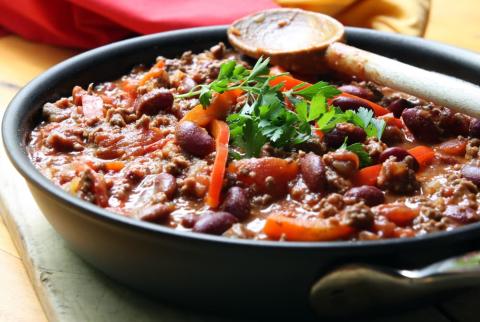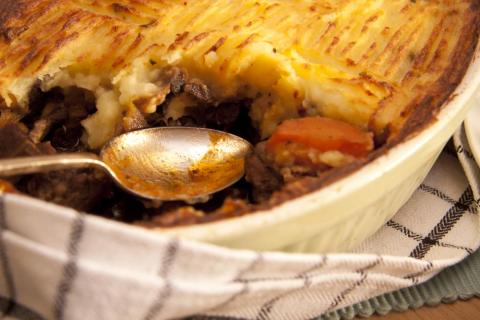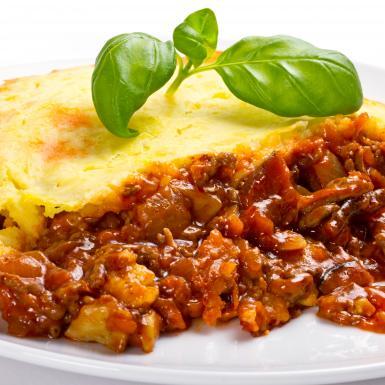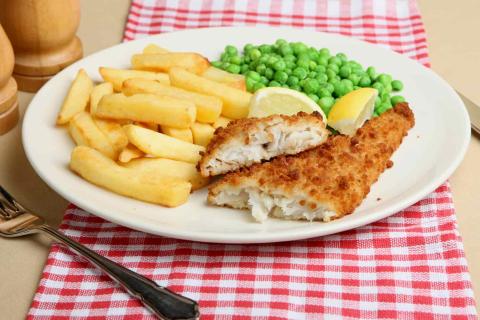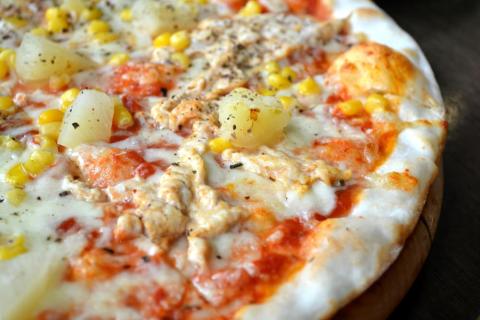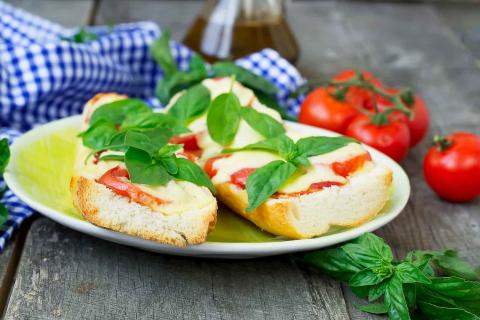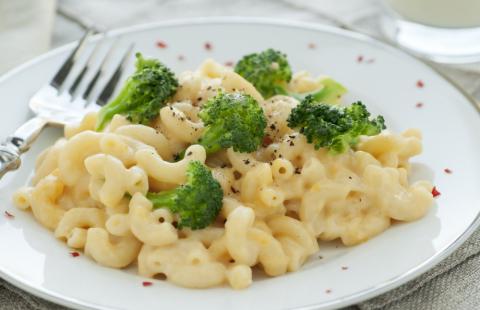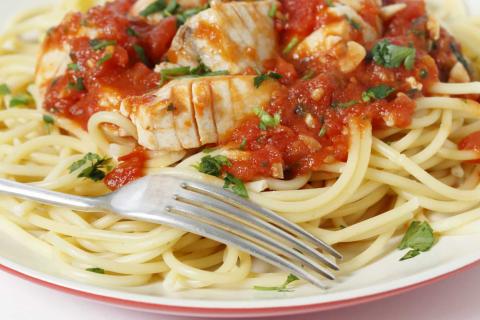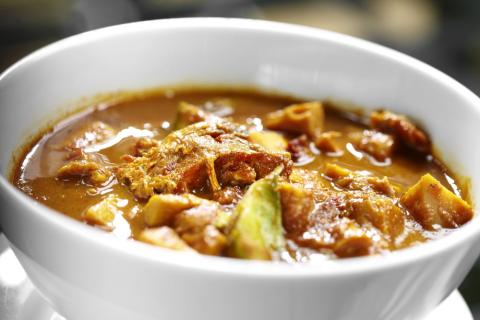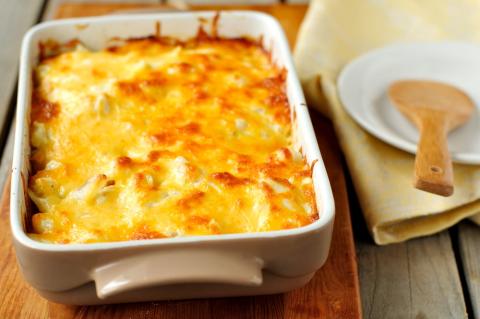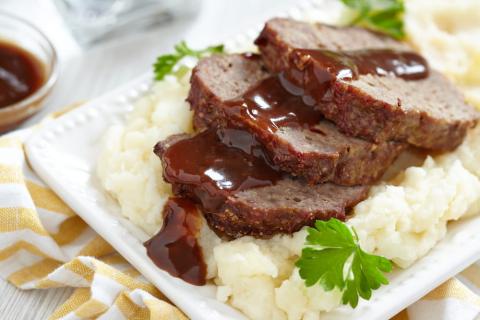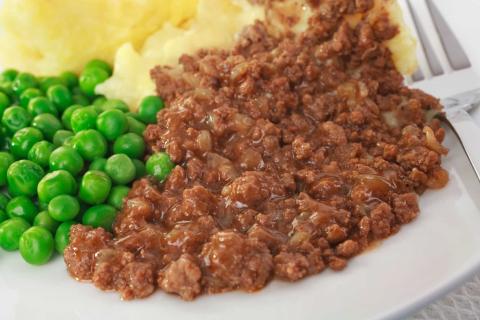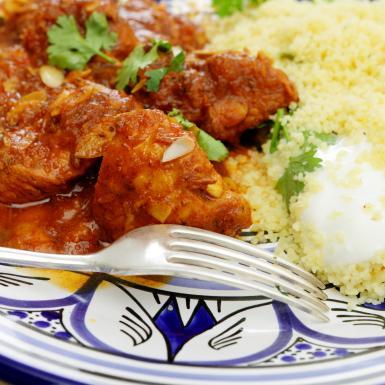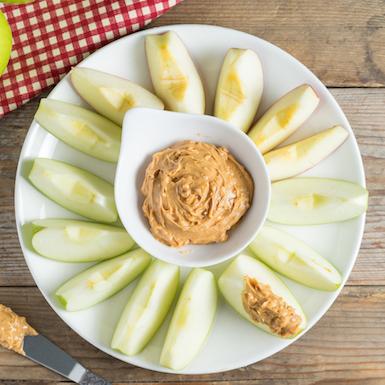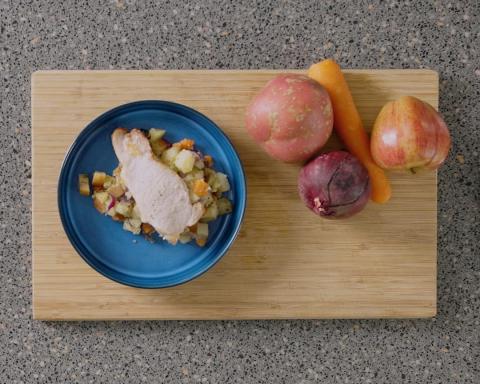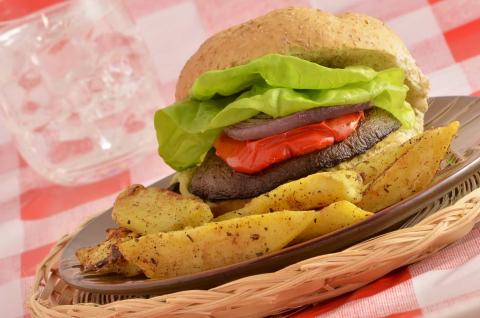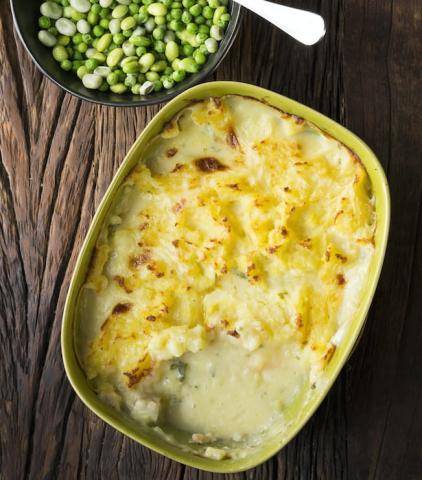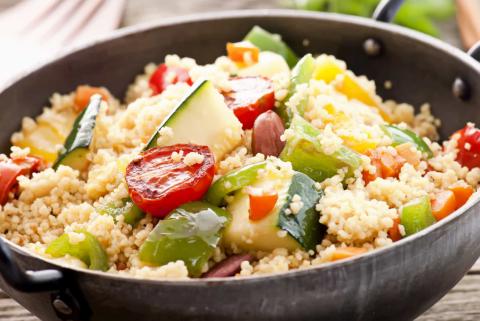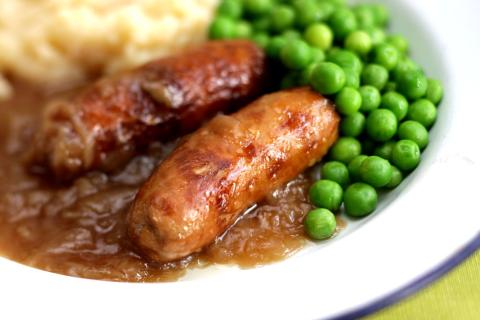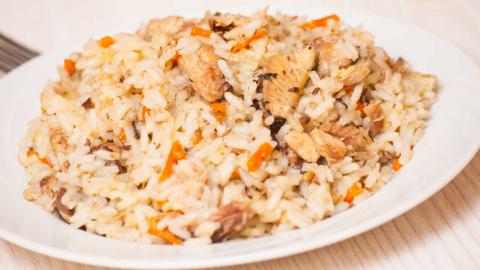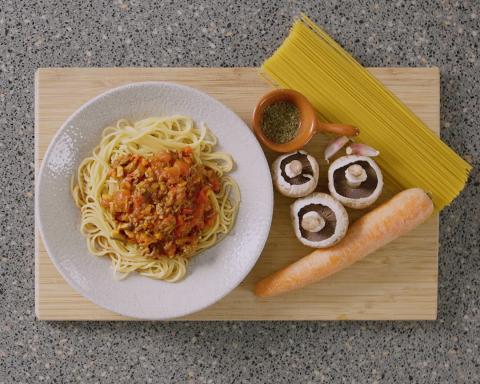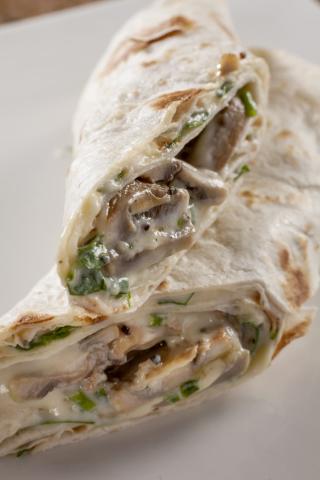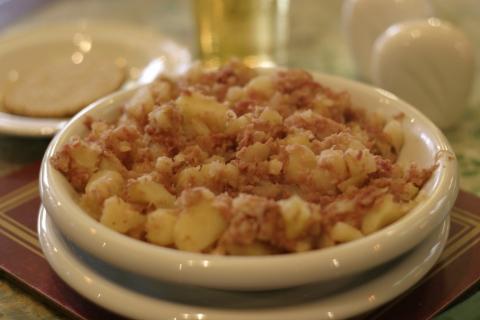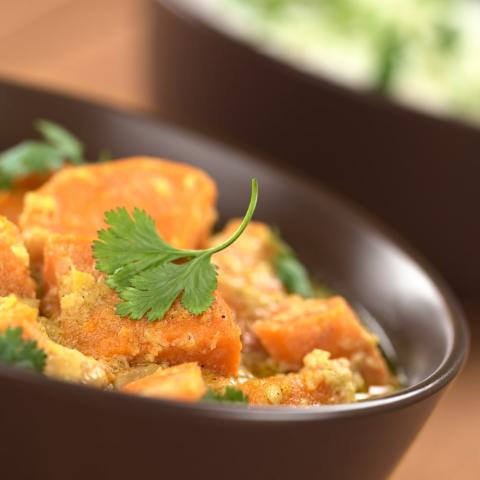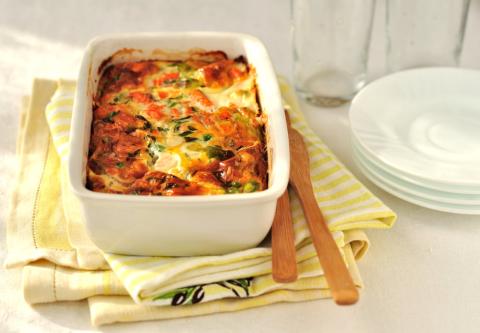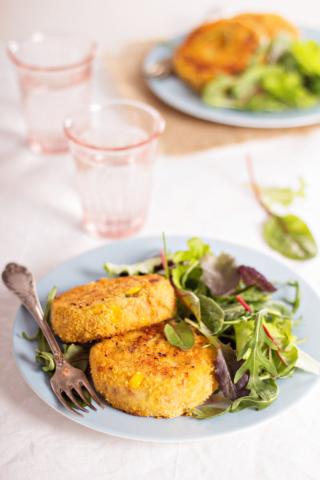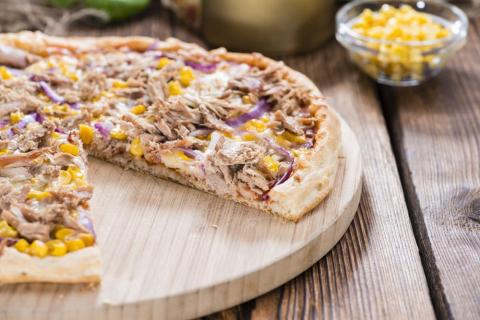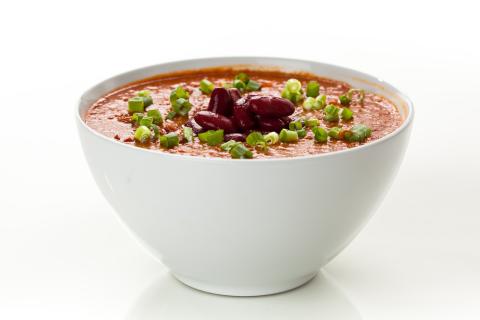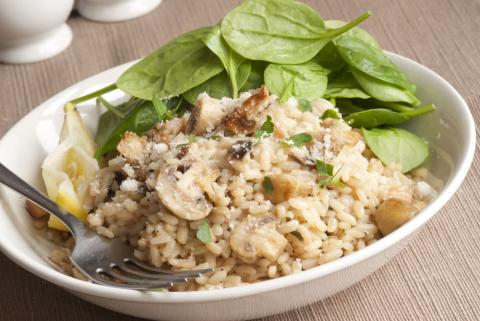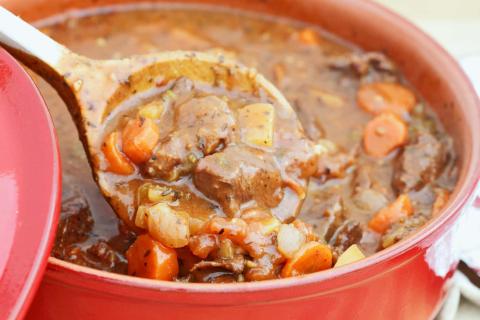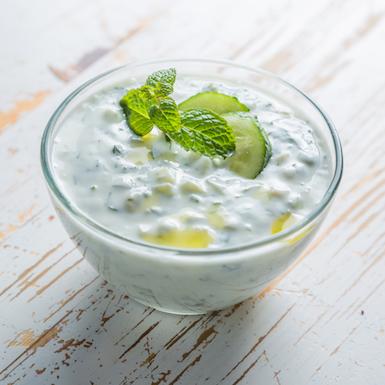- 1 Pack (440g) Diced Frying Beef
- 1 Tablespoon (10g) Vegetable Oil
- 4 (40g) Spring Onions
- 1 (160g) Pepper
- 1 Pack (200g) Sugar Snap Peas
- 8 Teaspoons (40g) Reduced Salt Soy Sauce
- 1 Tablespoon (20g) Sugar
- 2 (6g) Garlic Cloves
- 1 1 cm Piece (10g) Ginger
- 1 Level Tablespoon Tablespoon (20g) Cornflour
- 1 Mug (300g) Rice
Ingredients
Allergy Disclaimer
Always check the label of each ingredient for allergy warnings.
Method
- Peel garlic and use a knife remove outer layer of ginger using a knife or vegetable peeler. Chop both into small pieces.
- In a small bowl mix 3 teaspoons of soy sauce with the cornflour, sugar, garlic and ginger then add the beef. Leave to one side while preparing other ingredients or if time leave to marinade for 20 minutes.
- Deseed the pepper and slice. Prepare spring onions by chopping off top and bottom and removing outer layer if required. Slice into small pieces.
- Heat oil in a large frying pan or wok. Add beef to pan and fry for 3 minutes until it begins to brown.
- Meanwhile cook the rice as per manufacturers' instructions.
- Add the pepper and sugar- snap peas to the pan and cook for 2-3 minutes then add the spring onion and the remaining soy sauce.
- Cook for a further 2 minutes then serve with the rice.
Time Saver Tips
Prepare marinade and leave beef to marinade in advance or even overnight (cover with marinade and refrigerate).
Tips for Kids
Use their favourite vegetables. They could try eating with chopsticks.
Nutritional Information
Based on a single serving of 409g (% of an adult's reference intake)
Energy
552 kcals ( 28 %)
2,319 kJ ( 28 %)
Fat
3.7 g ( 19 %)
Saturates
83 g ( %)
Sugar
10.6 g ( 12 %)
Salt
1.2 g ( 20 %)
Detailed nutritional information
| Per 100g | Per 409g serving | |
|---|---|---|
| Energy Kcals | 135 | 552 |
| Energy Kj | 567 | 2,319 |
| Protein | 8 g | 32.7 g |
| Total Fat | g | g |
| Saturated Fat | 0.9 g | 3.7 g |
| Carbohydrates | 20.3 g | 83 g |
| Total Sugars | 2.6 g | 10.6 g |
| NSP Fibre | 0.4 g | 1.6 g |
| Sodium | 126 mg | 515 mg |
| Salt | 0.3 g | 1.2 g |
Find out about nutritional labelling
Nutrition labels on the front of packaging
- Most of the big supermarkets and many food manufacturers display nutritional information on the front of pre-packed food.
- Front of pack nutrition labels provide information on the number of grams of fat, saturated fat, sugars and salt and the amount of energy (in kJ and kcal) in a serving or portion of a recipe.
- The labels also include information about reference intakes (expressed as a percentage) which are guidelines about the approximate amount of particular nutrients and energy required for a healthy diet.
- The colour coding tells you at a glance if the food has high (red), medium (amber) or low (green) amounts of fat, saturated fat, sugars and salt.
- The more greens on the label, the healthier the choice
- Amber means neither high nor low, so you can eat foods with all or mostly ambers on the label most of the time.
- Reds on the label means the food is high in that nutrient and these are the foods we should cut down on. Try to eat these foods less often and in small amounts.
Food shopping tips
If you’re trying to decide which product to choose, check to see if there's a nutrition label on the front of the pack. This will help you to quickly assess how your choices stack up. You will often find a mixture of red, amber and green colour coding for the nutrients. So when you're choosing between similar products, try to go for more greens and ambers and fewer reds if you want to make a healthier choice.
 Activities & Play
Activities & Play Behaviour
Behaviour Childcare
Childcare Development & Growing Up
Development & Growing Up Family, Friends & Relationships
Family, Friends & Relationships Feeding Your Baby
Feeding Your Baby Food & Eating
Food & Eating Health & Safety
Health & Safety Mental Health & Wellbeing
Mental Health & Wellbeing Money & Work
Money & Work Online Behaviour & Safety
Online Behaviour & Safety Pregnancy & First Days
Pregnancy & First Days School & Education
School & Education Sleep
Sleep

